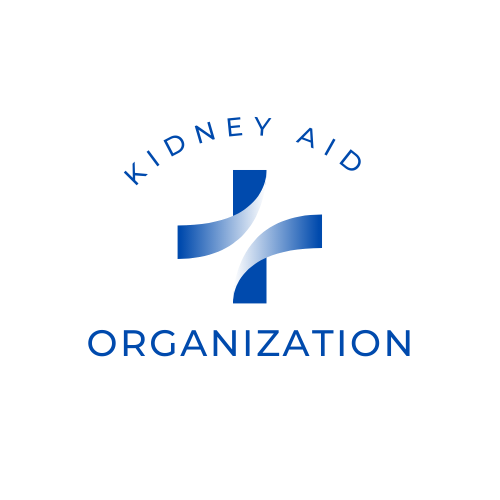What is a Low Protein Diet for Kidney Disease?
A low protein diet is a diet that limits the amount of protein you consume. Protein is an essential nutrient that helps build and repair tissues in your body. However, when you have kidney disease, your kidneys cannot filter out the waste products of protein metabolism. This can put additional strain on your kidneys, leading to further damage.
A low protein diet aims to reduce the amount of protein your body needs to metabolize, thereby reducing the workload on your kidneys. Typically, a low protein diet limits protein intake to 0.6-0.8 grams per kilogram of body weight per day. This is much less than the average protein intake of most people, which is around 1 gram per kilogram of body weight per day.
Why is a Low Protein Diet Necessary for Kidney Disease?
A low protein diet is necessary for kidney disease because it helps reduce the workload on your kidneys. When you have kidney disease, your kidneys are already damaged, and they cannot filter out waste products as efficiently as they should. This means that waste products can build up in your body, causing further damage. Protein is broken down into waste products in your body, and these waste products need to be filtered out by your kidneys. When you consume too much protein, your kidneys have to work harder to filter out the waste products. This can lead to further damage to your kidneys.
What Foods Should You Eat on a Low Protein Diet?
Fruits and Vegetables
Fruits and vegetables are excellent sources of vitamins, minerals, and fiber, and they are low in protein. These foods can be eaten in unlimited quantities and should make up the bulk of your diet. Some examples of low protein fruits and vegetables include:
- Apples
- Berries
- Melons
- Oranges
- Peaches
- Tomatoes
- Cucumbers
- Broccoli
- Carrots
- Spinach
- Cauliflower
- Asparagus
Bread and Pasta
Bread and pasta are low protein options that can provide energy and fiber. However, it's essential to choose whole grain options when possible to get the most nutritional value. Some examples of low protein bread and pasta include:
- Whole grain bread
- Whole wheat pasta
- Rice noodles
- Corn tortillas
Rice and Grains
Rice and grains are another good source of energy and fiber. However, it's important to choose low protein options like white rice, couscous, and quinoa. Some examples of low protein rice and grains include:
- White rice
- Couscous
- Quinoa
- Bulgur
- Cornmeal
Nuts and Seeds
Nuts and seeds are high in healthy fats, vitamins, and minerals, and can be eaten in small amounts on a low protein diet. Some examples of low protein nuts and seeds include:
- Almonds
- Walnuts
- Sunflower seeds
- Pumpkin seeds
- Chia seeds
Oils and Fats
Oils and fats can provide flavor and texture to your meals while being low in protein. However, it's important to choose healthy options like olive oil, avocado, and nuts. Some examples of low protein oils and fats include:
- Olive oil
- Avocado
- Nuts (almonds, cashews, peanuts, pecans)
- Butter (in small amounts)
A low protein diet is necessary for kidney disease management, but it doesn't mean you have to sacrifice taste or nutrition. By focusing on low protein options like fruits, vegetables, grains, and healthy fats, you can still enjoy delicious and satisfying meals while supporting your kidney health. It's important to work with a registered dietitian or healthcare provider to create a personalized low protein diet that meets your nutritional needs and manages your kidney disease.
What Foods Should You Avoid on a Low Protein Diet?
Meat, Poultry, and Seafood
Meat, poultry, and seafood are high in protein and should be avoided or limited on a low protein diet. Some examples include:
- Beef
- Pork
- Chicken
- Turkey
- Fish
- Shellfish
Dairy Products
Dairy products such as milk, cheese, and yogurt are high in protein and should be avoided or limited on a low protein diet. Some examples include:
- Milk
- Cheese
- Yogurt
- Ice cream
Beans, Legumes, and Lentils
Beans, legumes, and lentils are high in protein and should be avoided or limited on a low protein diet. Some examples include:
- Black beans
- Chickpeas
- Lentils
- Kidney beans
Nuts and Nut Butters
While nuts and nut butters are healthy fats and can be eaten in small amounts, they are also high in protein and should be limited on a low protein diet. Some examples include:
- Peanut butter
- Almond butter
- Cashews
- Pistachios
Processed Foods
Processed foods like fast food, packaged snacks, and pre-made meals are often high in protein and should be avoided or limited on a low protein diet. These foods can also be high in sodium, sugar, and unhealthy fats, which can worsen kidney disease. Low protein diet requires avoiding or limiting high protein foods such as meat, poultry, seafood, dairy products, beans, legumes, lentils, nuts, and nut butters.
Processed foods should also be avoided or limited to reduce the risk of consuming excess protein, sodium, sugar, and unhealthy fats. It's important to work with a registered dietitian or healthcare provider to create a personalized low protein diet that meets your nutritional needs and manages your kidney disease.
The Consequences of a Poor Diet
Increased Risk of Complications
Consuming unhealthy or high protein foods with kidney disease can increase the risk of complications such as high blood pressure, fluid retention, and electrolyte imbalances. This can lead to further damage to the kidneys, making it harder for them to filter waste and maintain proper fluid and electrolyte balance.
Progression of Kidney Disease
Eating a diet high in protein, sodium, and unhealthy fats can also increase the progression of kidney disease. Consuming high amounts of protein can cause an increase in waste products that the kidneys have to filter, putting more strain on the kidneys and potentially causing further damage.
Increased Risk of Cardiovascular Disease
Kidney disease is associated with an increased risk of cardiovascular disease, and consuming unhealthy foods can exacerbate this risk. Eating a diet high in sodium and unhealthy fats can increase blood pressure and cholesterol levels, which can increase the risk of heart disease and stroke.
Malnutrition
Limiting protein intake is essential in managing kidney disease, but it's also important to ensure you're getting enough nutrients. Eating unhealthy or processed foods can lead to malnutrition and a lack of essential vitamins and minerals, which can further worsen kidney function and overall health. Eating bad or unhealthy food with kidney disease can increase the risk of complications, worsen the progression of kidney disease, increase the risk of cardiovascular disease, and lead to malnutrition.
It's important to follow a personalized low protein diet that meets your nutritional needs and is recommended by a registered dietitian or healthcare provider. Eating a diet rich in fruits, vegetables, whole grains, and healthy fats and limiting high protein, processed, and unhealthy foods can help manage kidney disease and improve overall health.
Conclusion
Low protein diets can help manage kidney disease by reducing the workload on your kidneys. By limiting your protein intake, you can reduce the amount of waste products that need to be filtered out by your kidneys. However, it's essential to work with a registered dietitian or healthcare provider to develop a personalized low protein diet that meets your nutritional needs while managing your kidney disease. With the right diet and lifestyle changes, you can improve your kidney function and overall health.

